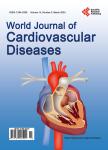Iron Succinate Increased Ferritin and Transferrin Saturation in Non-Anaemic Patients with Heart Failure and Iron Deficiency—A Pilot Study
Iron Succinate Increased Ferritin and Transferrin Saturation in Non-Anaemic Patients with Heart Failure and Iron Deficiency—A Pilot Study作者机构:Research Unit Department of Medicine Skellefteå Sweden Department of Public Health and Clinical Medicine Umeå University Umeå Sweden
出 版 物:《World Journal of Cardiovascular Diseases》 (心血管病(英文))
年 卷 期:2021年第11卷第1期
页 面:11-19页
学科分类:1002[医学-临床医学] 100210[医学-外科学(含:普外、骨外、泌尿外、胸心外、神外、整形、烧伤、野战外)] 10[医学]
主 题:Iron Deficiency Non-Anemic Heart Failure Iron Succinate
摘 要: Introduction: Iron deficiency (ID) is often present (32% - 65%) in patients with heart failure (HF). Oral iron absorption in patients with HF is generally poor. This is the reason why oral treatment is not recommended. Aim: To test whether oral iron succinate significantly increases iron deposits in non-anaaemic patients with HF. Methods: ID was defined as ferritin 2+ plus 100 mg succinate) in the morning and one tablet at bedtime for at least 3 months. Hemoglobin, CRP, ferritin, iron, TSAT, and hepcidin were analyzed before starting treatment, at 6 weeks, and at 3 months end of study (EOS). Results: Five women and 15 men were included in the study. The level of ferritin increased significantly from baseline to 6 weeks (47 to 78 μg/L, p = 0.009) and baseline to EOS (47 to 85 μg/L, p = 0.001). TSAT increased significantly from baseline to 6 weeks (20% to 27%, p = 0.046) and baseline to EOS (20% to 25%, p = 0.043). Hepcidin increased significantly from baseline to 6 weeks (2.5 nmol/L to 4.8 nmol/L, p = 0.006) and baseline to EOS (2.5 to 4.2 nmol/L, p = 0.02). Conclusion: Oral iron succinate significantly increased iron uptake, almost doubling the ferritin levels and increasing the TSAT, in patients with HF. Our findings challenge the opinion that oral iron treatment cannot significantly increase iron deposits in non-anemic patients with ID and HF.



